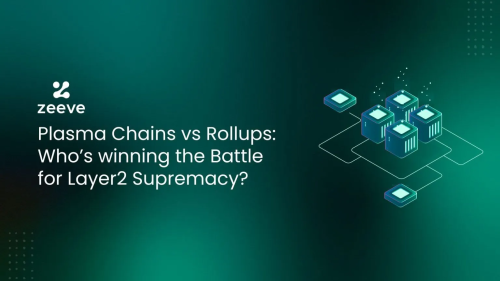
Plasma Chains vs Rollups: Who’s winning the Battle for Layer2 Supremacy?
While Ethereum continues to record rapid development of Layer2s on its ecosystem, it also sees trade-offs like network congestion, low TPS, and slow response time. Plasma and rollups are the two layer-2 solutions that have proven to be able to tackle blockchain’s scalability problem efficiently.
Back in 2017, Plasma got huge traction with its ability to process transactions on a separate child chain, thereby making space for high scalability, throughput, and speed. As we know, Plasma chains gradually vanished due to their application limitations and increased cost of client-side data storage.
Now that the discussion around Plasma’s revisit is going on, let’s discuss Plasma chains vs rollups for layer2 in this article. We will mainly get a brief overview of the key features of Plasma chains and rollups, their benefits, and comparison of their feasibility. But, before we start over, let’s recap the basic concept of Plasma chains and rollups, so that further explanation becomes easy to understand.

Plasma chains vs Rollups: The basics
What are Plasma Chains?
Plasma chains are independent child chains that are built and managed on top of the main blockchain (like Ethereum), also called the parent chain. These smaller copies of Ethereum are built with Plasma Framework by utilizing smart contracts and Merkle trees mechanism.
Plasma chains compute all the transactions offline, except deposits, withdrawals, and Merkle roots. All the off-chain data, Plasma smart contract, which is never disclosed on Layer1. Only the final state is published on-chain, which needs to be updated periodically. This approach of Plasma chain creates the problem of data availability, reducing its feasibility for today’s projects.
The main idea behind Plasma chains is to create a hierarchical ecosystem of interconnected blockchains, where each chain is responsible to manage its own consensus and security system. Each Plasma chain can be customized to offer specific purpose, including consensus mechanism, tokens, and network-level features. However, Plasma chains are hard to optimize for use cases beyond payments.
What are rollups?
Rollups in blockchain are off-chain layer-2 scaling solutions that execute the transactions outside the settlement layer, i.e. Ethereum in this case. Blockchain rollups are of Rollups are of two main types– Optimistic rollups and Zkrollups.
In Optimistic Rollups bundle transactions together into large batches and then post the compressed data on Ethereum. By doing so, Optimistic rollups make the data available for participants to validate and raise dispute (if required) during the challenge period.
ZK Rollups also works like Optimistic rollup, but it use advanced cryptographic proofs to prove that the transactions are valid. These proofs are published on layer-1, rather than posting complete transaction data..
Rollups are also designed to be easily customizable,hence they can be easily optimized to suit as per use case-specific applications– be it payments, gaming, DeFi, etc.
Analyzing the key features of Plasma chains and rollups:
Following are some of the main features that explain the feasibility of two scaling solutions– Plasma chains vs Rollups for layer2:
Key features of Plasma chains:
Off-chain transaction computation:
Plasma chains support off-chain processing of transactions, freeing up the nodes from validating each transaction. Off-chain computation reduces congestion on Layer-1 and thereby allows the Plasma chain to be easily optimized for speed and cost. However, Plasma chain never disclose transaction data to the base layer, rather they are stored offline on the chid chain itself.
State commitments:
State commitments in Plasma chains are a form of ‘Merkle Roots’ (derived from the Merkle Tree) that operators must submit on the Ethereum chain at regular intervals. This approach maintains synchronization between the Plasma chain and parent chain, preventing the issue of invalid transactions. Further, this mechanism enables plasma chains to leverage Etereum’s security.
Dispute arbitration:
Similar to all other blockchains, Plasma chains also need a mechanism that ensures the integrity of transactions in case of malicious activities like double-spending of funds. To overcome this, Plasma uses fraud proofs to settle disputes regarding the validity of transactions and also to penalize malicious behavior.
Entries and Exits:
Plasma chains utilize a master contract that is deployed on Ethereum. This contract works as a channel between Plasma network and mainnet, enabling seamless movement of assets between them. Plus, this master contract also accounts for monitoring state commitments and punishing malicious behavior through fraud proof.
Key features of Blockchain rollups
On-chain data availability:
Although rollups execute transactions off-chain, but the compressed data is made available on-chain, allowing users to verify the authenticity of each transactions. This is the case for Optimistic rollups, while in Zk-rollups, batched transactions are submitted on layer1 through the provision of cryptographic proofs. Thereby, rollups keep data open, accessible, and transparent, maintaining integrity of the entire network.
Validity proofs:
Zkrollups use advanced cryptographic proof that ensures immediate confirmation of transactions without the need of details of the calculation on-chain. These validity proofs have wide ranges, including zk-SNARK and zk-STARKS, which offer their own unique properties for rollups, for examples it makes proofs Layer-1 for verification, without revealing the actual data.
Smart contract as trust mechanism:
While serving as Layer-2, blockchain rollups use smart contracts that are deployed and managed on the Ethereum network to ensure trust and security.
Censorship resistance:
While ‘supernode’ (also known as operators) in rollups can censor transactions or refuse to add certain transactions into batches, users on a rollup network have the choice to submit their transaction directly on mainnet contract. This prevents censorship while ending users’ dependency on the operator for rollup—> Ethereum funds exit.
Plasma chains vs Rollups: What Advantages they offer to maintain Layer2 Supremacy?
Advantages of Plasma chains:
Improved scalability:
By offloading transactions from the main chain to a child chain, Plasma chains improve Layer1 scalability significantly. Plus, make use of powerful consensus algorithms while minimizing the requirement for data storage, which further improves the through capacity of Plasma chains, allowing them to offer higher scalability compared to traditional blockchains.
Lower fees:
Second, it lowers the fees for the users, by allowing them to transact on the child chains, which have less competition and congestion than the main chain.
Customizability:
Plasma chains are standalone chains that can be customized depending on preferences of dApps. For example, a Plasma chain can offer privacy-preserving features for safety of transactions, it can include complex smart contracts, or support NFTs. Note that, these customization are mainly for payment use cases. Beyond that, Plasma chains currently doesnot support optimization.
Security:
Although independent, Plasma chains drive security and finality from the root chain (Ethereum) and meanwhile it ensure additional security through fraud-proofs. Besides this, users on a Plasma chain have the flexibility to exit their funds anytime and shift it to the root chain in case they suspect any malicious behavior or the chain itself becomes unavailable.
Advantages of rollups:
Massive scalability:
By aggregating several transactions into a single batch and processing all of them off-chain, rollups improve the capacity of the network for processing transactions in a given time. Based on the requirements, rollup projects can customize and adjust the TPS capacity of their network. On top of this, ZKrollups takes the scalability to next-level as it includes proofs to verify authenticity of transactions with no concept of ‘challenge period’ that causes delay in transactions processing.
High-level security:
Rollups– whether Optimistic or Zkrollups, they inherit security directly from underlying Layer-1 (for example Ethereum), leveraging its decentralization and tamper-resistant capabilities. Further, Zk rollups utilize advanced cryptographic proofs to ensure transactions’ validity and integrity.
Extremely low or even gasless transactions:
Transaction fee is significantly less on a rollup network as transactions are processed off-chain where network congestion is almost nil. Plus, rollups can use on-chain resources for reduction in gas fee or they can even offer gasless transactions to users.
Ethereum-compatibility:
Almost all the rollups are 100% compatible with Ethereum. Meaning that, developers can port their existing Ethereum dApps seamlessly to a rollup ecosystem with no need of changes in the code, framework or use of different dev tooling. Also, this compatibility ensures interoperability between rollups and Ethereum, allowing users to share messages and arbitrary data easily between L1 and L2.
Off-chain data availability with Validium:
Blockchain rollups can be designed as Validiums to enable off-chain data storage through a centralized data provider. For example, Polygon CDK allows Zkrollups chains to be launched as Validiums where a central DA layer can be used and availability is ensured through Data Availability Committees (DACs). Storing data on a separate DA layer is cheaper and less complex compared to Ethereum.
The challenge with Plasma: What caused its downfall?
As discussed, Plasma chains provide a range of advantages for Layer-2 scaling, but it faces critical challenges that have led to its downfall. Speaking about the projects, OMG Network and Matic Network (now Polygon) are popular Plasma networks. OMG Network is still using a viable version of Plasma for Ethereum scaling. However, Plasma sidechain on Polygon is becoming zkEVM validium– one-of-a-kind Layer2 public chain powered with zero-knowledge proofs.
So, what are those challenges?
- The biggest risk in the Plasma chain is the malicious act of the operator. What will happen if the operator publishes a block that has invalid transactions or there can be a situation where operator refuse to provide crucial information to the users. All these can harm the ecosystem and its users as a whole.
- Another critical challenge is data availability. Data on Plasma chains is not available on-chain. Instead, it is stored off-chain. Incase any Plasma block or its proof is unavailable, users will not be able to challenge the transactions or exit their funds. This is possible when the operator goes offline, censors the transactions, or does any malicious activity.
- Plasma chains are less matured in terms of interoperability. They have difficulties achieving interoperability with other Plasma chains and Layer2 solutions. Lack of interoperability limits the usability and functionality of the network, thereby impacting the user experience.
- Plasma chains can also face high network congestion if there’s a situation of mass exits. For example, if the network has been attacked or even shutdown, users will want to withdraw funds in mass volume which will cause congestions and leads of high fees.
Are Plasma chains returning? What’s Vitalik Buterin’s recent take on Plasma’s return:
Few months ago, Ethereum’s co-founder Vitalik Buterin made a startling statement about the return of Plasma chains. He said blockchain rollups will remain “gold standard” but Plasma needs to revisit as it has “underrated design space”.

Vitalik claims that the biggest challenge of Plasma chains— client-side data storage costs and fundamental limitations that do not allow Plasma to be utilized beyond payments, can be addressed with validity proofs, such as ZK-SNARK. Also, he highlights the utilization of the wide range of tools for creation of Plasma-like chains which can run their EVMs.
The basic favor Plasma chains expect from Zk-based validity proofs is the verification of each Plasma block. This greatly improves the design space, meaning that the only problem occurring on the operator side is the unavailability of blocks, but no invalid blocks anymore. Vitalik also wants to generalize Plasma chains for NFTs and make it fully compatible with Ethereum, so that any type of Ethereum dApps can effortlessly and economically shift to Plasma chains.
Additionally, withdrawals will be instant in validity-proven Plasma chains. Generally, this is possible when the operator is 100% available and honest. But with the inclusion of validity proofs, this condition is no longer applicable. Hence, delayed withdrawal will no longer be a problem for Plasma Chains.
Despite all these possibilities, Vitalik Buterin’s vision on Plasma chain’s revisit is currently a thesis, which is receiving many disagreements and arguments in the web3 community. Maybe in future, Plasma chains will return, but for now, rollups are the ultimate scaling solutions that are preferred by most web3 projects.

Conclusion
Plasma chains vs Rollups for layer2 are scaling solutions with common goal of tackling the Layer1 scalability issue. But, we know that Plasma chains are currently not so popular in the web3 space. Meanwhile, rollups, which are also said to be the endgame for blockchain’s scalability issue, are actively being implemented in a lot of web3 projects. Leading rollup stacks like Polygon CDK, OP Stack, Arbitrum Orbit, and ZkStack are the choice of innovative web3 projects spanning gaming, NFTs, DeFi, payments tokenization, and more. Hence, we can conclude that rollups right now hold the supremacy for Layer2 scaling.
If you are planning to launch application-specific L2/L3 chains, Zeeve can simplify this for you. Zeeve’s rollups-as-a-service offers modular RaaS for seamless, one-click deployment of rollup chains with full provisioning (block explorers, faucets, cross-chain bridge, indexers, etc) and a range of integration partners (Biconomy and Halliday for Account Abstraction, Celestia for DA, Espresso and Radius for sequencers, ChainLink and RedStone for Oracles, and many more). 1-click Sandbox is also available for DevNets, providing you the flexibility to try as many configurations as possible and deploy sample dApps before moving to Mainnet. For more information on how Zeeve is simplifying the launch of blockchain rollups or to understand our services better, connect with our experts. We are happy to assist you.



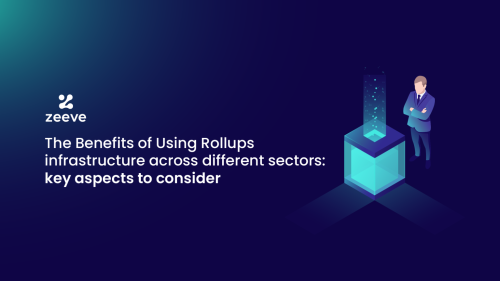
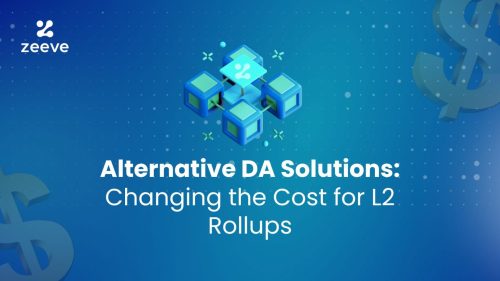
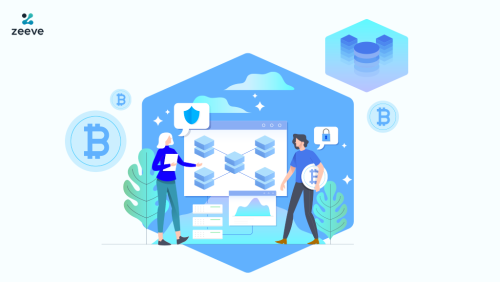
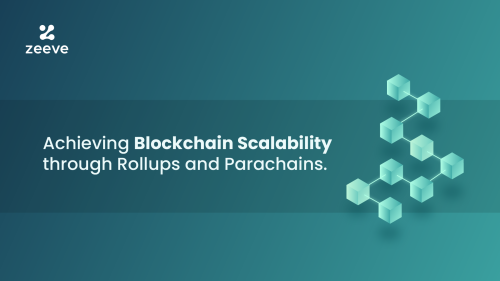
Responses